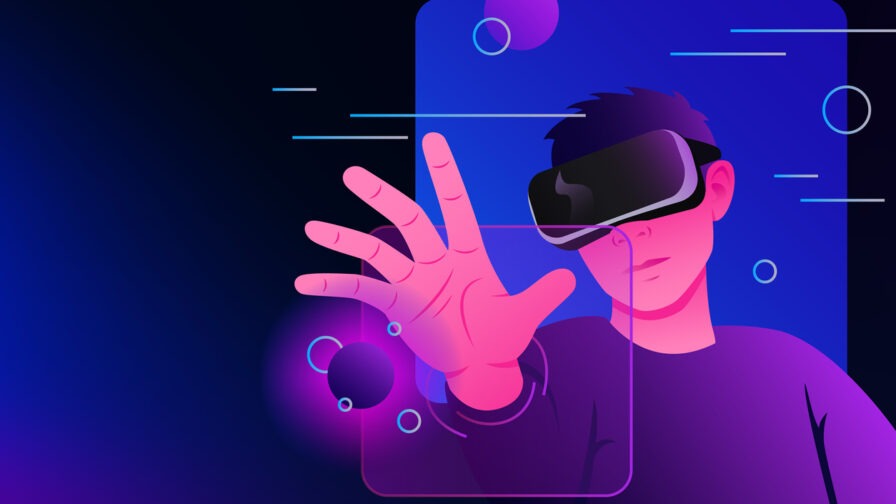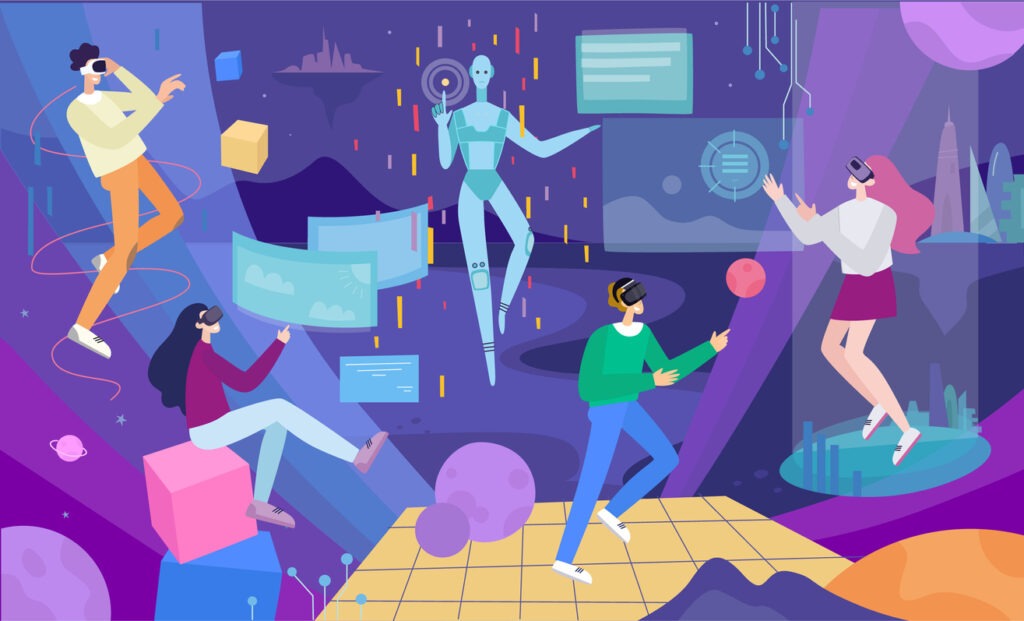
The origins of the Metaverse
The initial challenges of the Metaverse are likely to be similar to the challenges faced by the Internet when it was first developed. These challenges may include technical issues, such as building the infrastructure and developing standards for communication and interoperability, as well as non-technical issues, such as establishing governance and addressing issues of privacy and security. Additionally, there may be challenges related to the sheer scale and complexity of the Metaverse, as it will likely involve a vast network of interconnected virtual environments, each
with its own unique features and characteristics.
These may include:
- Building the infrastructure and developing standards for communication and interoperability.
- Establishing governance and addressing issues of privacy and security.
- Managing the sheer scale and complexity of the Metaverse.
- Improving the overall graphical quality of the Metaverse.
- Developing a business model that supports the growth and development of the Metaverse.
- Ensuring that the content is accessible and inclusive to users of all backgrounds and abilities.
- Addressing potential legal and ethical issues that may arise
These challenges will likely require collaboration and cooperation among a wide range of stakeholders, including technology companies, government agencies, researchers, and users themselves.
What’s the developer’s role in the Metaverse?
The development of the Metaverse will require a wide range of developers with different skills and expertise. This may include front-end developers who can create the user interface and user experience of the metaverse, as well as back-end developers who can build the underlying technology and infrastructure. Additionally, the Metaverse will likely require developers with expertise in fields such as computer graphics, artificial intelligence, and network security, among others. In order to build the metaverse, developers will need to work closely together and draw on a diverse range of skills and knowledge.

The role of developers will be to create the virtual environments and experiences that make up the Metaverse. This may include building the underlying technology and infrastructure, as well as designing and implementing the various applications and services that will be available in this universe. Developers will also be responsible for ensuring that the virtual environments they create are immersive, engaging, and accessible to users. In addition, developers will play a crucial role in helping to establish and enforce the standards and protocols that will govern the
Metaverse, as well as in addressing any technical challenges that may arise. Overall, the role of developers in the metaverse will be to help shape and define this new digital realm, and to make it a vibrant and engaging space for users.
It’s still hard to understand thoroughly what tech skills and languages will be needed to develop the future architecture of the Metaverse, but the following will probably play a role to some extent:
- JAVA
- C++
- Python
- Rust
- Cloud
Why are user experience design and game design so important in the Metaverse?

User experience design and game design will play an increasingly leading role in the Metaverse because they are crucial in creating engaging and immersive virtual environments for users.
User experience design focuses on creating a plausible story for the participants, managing their mood and emotional involvement to reach the experience goal. The interface and interactions design is also crucial within the metaverse to make it diegetic, intuitive and enjoyable for users, while game design focuses on creating engaging and challenging virtual experiences that keep users coming back for more.
These disciplines are essential for creating a successful and sustainable Metaverse, as they help to ensure that users have a positive and satisfying experience within this digital realm.
Some key rules for building a great immersive experience in the metaverse may include:
- Create a seamless and consistent user experience: The metaverse should be a plausible and consistent environment, with interfaces that are part of the environment like in the physical world, and intuitive rules of interaction.
- Focus on presence, which means how much participants are really engaged and feel themself inside the virtual world; it’s giving the illusion of being “right there” through a compelling story.
- Make the environment and its inhabitants believable: The virtual environment and the objects and characters within it should be believable and convincing, using realistic graphics and physics to create a sense of immersion.
- Provide engaging and challenging activities: The metaverse should provide users with engaging and challenging activities and experiences, whether these are games, social interactions, or other forms of entertainment.
- Allow for exploration and discovery: The metaverse should allow users to explore and discover new environments and experiences, providing a sense of adventure and discovery.
- Foster a sense of community and belonging: The metaverse should foster a sense of community and belonging among its users, encouraging social interactions and collaboration.
- Ensure that the metaverse is accessible and inclusive: The metaverse should be accessible and inclusive to users of all backgrounds and abilities, with appropriate accommodations for users with disabilities.
How can businesses grow in the Metaverse?
Businesses may be able to grow in the Metaverse and Web3 by providing products
and services that are in demand by users of these technologies. This could include virtual goods and services, as well as decentralized applications (dApps) and other services for Web3. Additionally, businesses may be able to use the Metaverse and Web3 as platforms for advertising and marketing, reaching a potentially global audience of users. In order to grow in the metaverse and Web3, businesses will need to stay up-to-date with the latest trends and developments in
these fields, and be prepared to adapt to new opportunities and challenges as they
arise.

The first steps that businesses should take to grow in the metaverse will depend on their specific goals and objectives, as well as the current state of the metaverse and the market opportunities it presents. However, some general steps that businesses may want to consider include:
- Research and understand the metaverse: Businesses should research and understand the metaverse and its potential opportunities and challenges. This may involve studying the current state of the metaverse, identifying key trends and developments, and assessing the potential market for their products or services.
- Identify potential customers and partners: Businesses should identify potential customers and partners within the metaverse, and research their needs, preferences, and behaviors. This may involve conducting market research and analyzing user data, as well as engaging directly with users and other stakeholders.
- Develop a Metaverse strategy: Based on their research and analysis, businesses should develop a metaverse strategy that outlines their goals and objectives, as well as the key steps and milestones they will need to achieve in order to grow in the metaverse.
- Build a presence in the Metaverse: Once businesses have a clear strategy in place, they can start building a presence in the metaverse, creating virtual environments, products, and services that are tailored to the needs and preferences of their target customers.
- Engage with the Metaverse community: Businesses should also engage with the user community, building relationships with other stakeholders, participating in discussions and events, and staying up-to-date with the latest developments in the Metaverse.
Conclusions: the Metaverse can become a rich universe
It is difficult to predict the exact evolution of the Metaverse, as it will depend on a number of factors, including technological advancements, user adoption, and the actions of various stakeholders.
However, it is likely that the Metaverse will continue to grow and evolve over time, becoming more sophisticated and immersive as new technologies and techniques are developed. The Metaverse may become a seamless extension of the physical world, with users able to move seamlessly between virtual and real environments.
It is also possible that the Metaverse will become a major platform for commerce, communication, and entertainment, with a wide range of businesses and organizations operating within it. Ultimately, the evolution of the Metaverse will be determined by the collective efforts and imagination of its users and creators, with companies such as Accenture playing a key role in designing innovative experiences for businesses and users alike within this environment.





